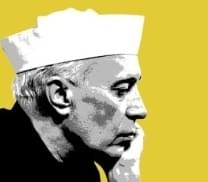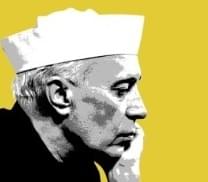Lite
What Did Nehru Think Of Aurangzeb?
Swarajya Staff
Sep 08, 2015, 09:57 PM | Updated Feb 11, 2016, 09:17 AM IST
Save & read from anywhere!
Bookmark stories for easy access on any device or the Swarajya app.


After the recent renaming of Aurangzeb Road in New Delhi as Abdul Kalam Road, leftist historians and assorted activists have renewed their attempts at whitewashing Mughal Emperor Aurangzeb’s “legacy”. We thought it might be an interesting idea to look at what Nehru thought of the Mughal emperor. An excerpt from Nehru’s The Discovery of India.
Only an Akbar might have understood the situation and controlled the new forces that were rising. Perhaps even he could have only postponed the dissolution of his empire unless his curiosity and thirst for knowledge led him to understand the significance of the new techniques that were arising, and of the shift in economic conditions that was taking place.
Aurungzeb, far from understanding the present, failed even to appreciate the immediate past; he was a throw-back and, for all his ability and earnestness, he tried to undo what his predecessors had done. A bigot and an austere puritan, he was no lover of art or literature. He infuriated the great majority of his subjects by imposing the old hated jeziya poll-tax on the Hindus and destroying many of their temples. He offended the proud Rajputs who had been the props and pillars of the Mughal Empire.

In the north he roused the Sikhs, who, from being a peaceful sect representing some kind of synthesis of Hindu and Islamic ideas, were converted by repression and persecution into a military brotherhood. Near the west coast of India, he angered the warlike Marathas, descendants of the ancient Rashtrakutas, just when a brilliant captain had risen amongst them.
All over the widespread domains of the Mughal Empire there was a ferment and a growth of revivalist sentiment, which was a mixture of religion and nationalism. That nationalism was certainly not of the modern secular type, nor did it, as a rule, embrace the whole of India in its scope. It was coloured by feudalism, by local sentiment and sectarian feeling. The Rajputs, more feudal than the rest, thought of their clan loyalties; the Sikhs, a comparatively small group in the Punjab, were absorbed in their own self-defence and could hardly look beyond the Punjab. Yet the religion itself had a strong national background and all its traditions were connected with India. ‘The Indians,’ writes Professor Macdonell, ‘are the only division of the Indo-European family which has created a great national religion — Brahmanism — and a great world religion — Buddhism; while all the rest far from displaying originality in this sphere have long since adopted a foreign faith.’
That combination of religion and nationalism gained strength and cohesiveness from both elements, and yet its ultimate weakness and insufficiency were also derived from that mixture. For it could only be an exclusive and partial nationalism, not including the many elements in India that lay outside that religious sphere. Hindu nationalism was a natural growth from the soil of India, but inevitably it comes in the way of the larger nationalism which rises above differences of religion or creed.
It is true that during this period of disruption, when a great empire was breaking up and many adventurers, Indian and foreign, were trying to carve out principalities for themselves, nationalism, in its present sense, was hardly in evidence at all. Each individual adventurer sought to augment his own power; each group fended for itself. Such history as we have only tells us of these adventurers, attaching more importance to them than to more significant happenings below the surface of events. Yet there are glimpses to show that it was not all adventurism, though many adventurers held the field. The Marathas, especially, had a wider conception and as they grew in power this conception also grew. Warren Hastings wrote in 1784: ‘The Marathas possess, alone of all the people of Hindostan and Deccan, a principle of national attachment, which is strongly impressed on the minds of all individuals of the nation, and would probably unite their chiefs, as in one common cause, if any great danger were to threaten the general state.” Probably this national sentiment of their was largely confined to the Marathi-speaking area. Nevertheless the Marathas were catholic in their political and military system as well as their habits, and there was a certain internal democracy among them. All this gave strength to them. Shivaji, though he fought Aurungzeb, freely employed Moslems.
An equally important factor in the break-up of the Mughal Empire was the cracking up of the economic structure. There were repeated peasant risings, some of them on a big scale. From 1669 onwards the Jat peasantry, not far from the capital itself, rose again and again against the Delhi Government. Yet another revolt of poor people was that of the Satnamis who were described by a Mughal noble as ‘a gang of bloody miserable rebels, goldsmiths, carpenters, sweepers, tanners, and other ignoble beings.’ Thus far revolts had been confined to princes and nobles and others of high degree. Quite another class was now experimenting with them.
While the empire was rent by strife and revolt, the new Maratha power was growing and consolidating itself in western India. Shivaji, born in 1627, was the ideal guerilla leader of hardened mountaineers and his cavalry went far and wide, sacking the city of Surat, where the English had their factory, and enforcing the chowth tax payment over distant parts of the Mughal dominions.
Shivaji was the symbol of a resurgent Hindu nationalism, drawing inspiration from the old classics, courageous, and possessing high qualities of leadership. He built up the Marathas as a strong unified fighting group, gave them a nationalist background, and made them a formidable power which broke up the Mughal Empire. He died in 1680, but the Maratha power continued to grow till it dominated India.




